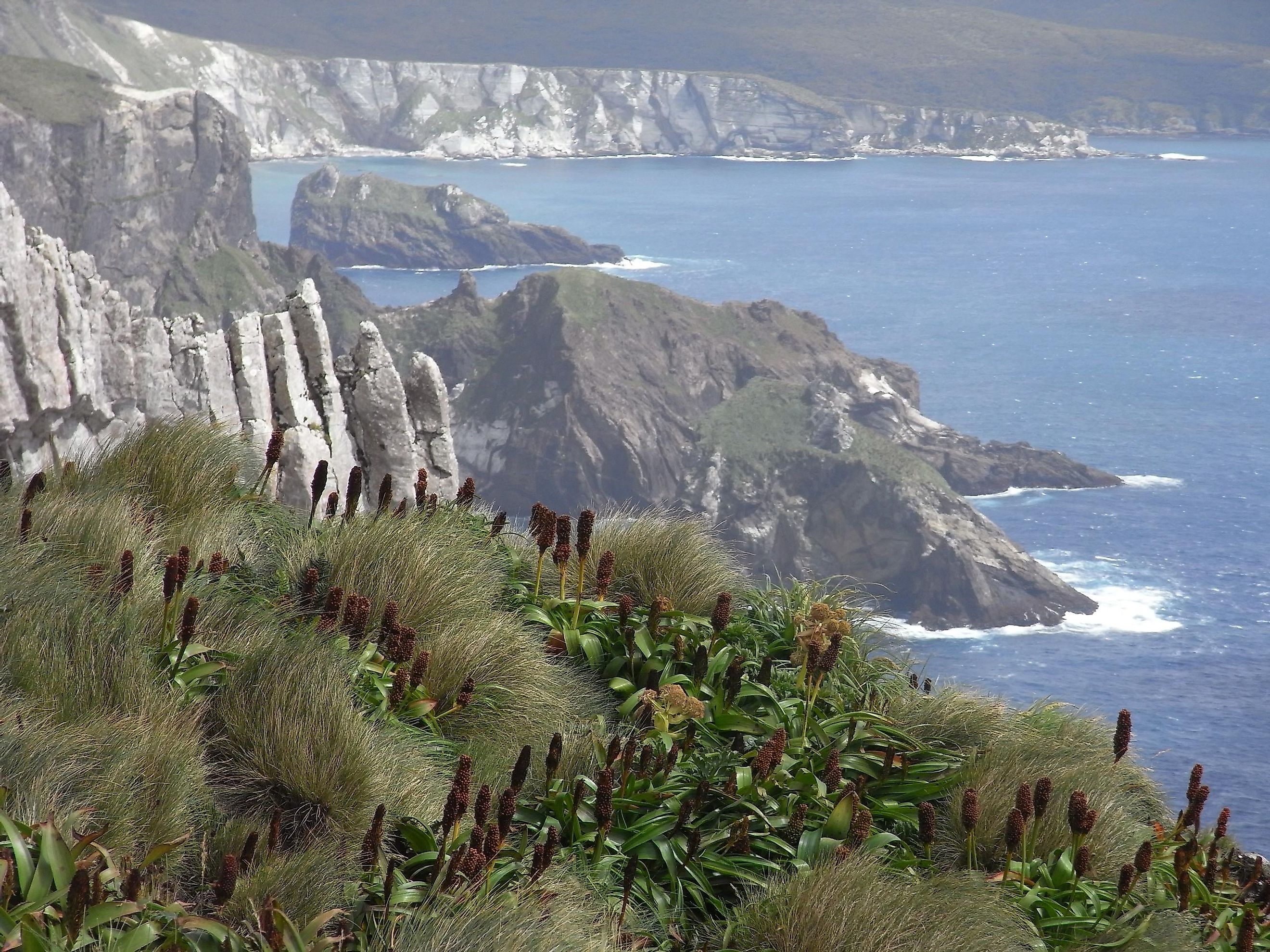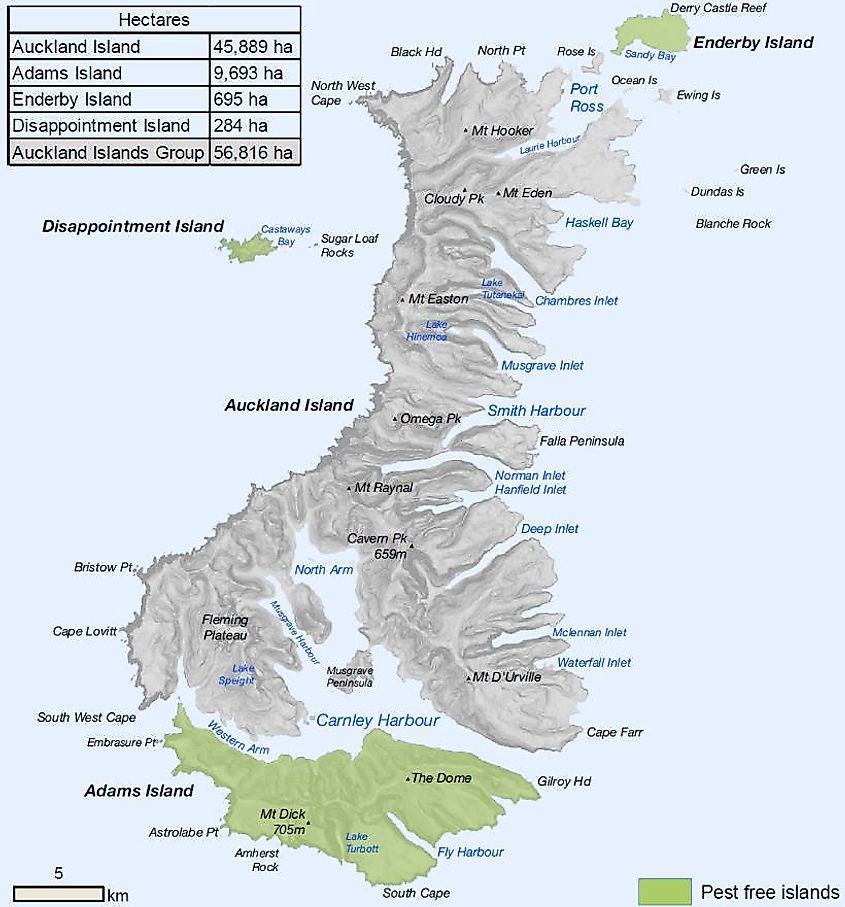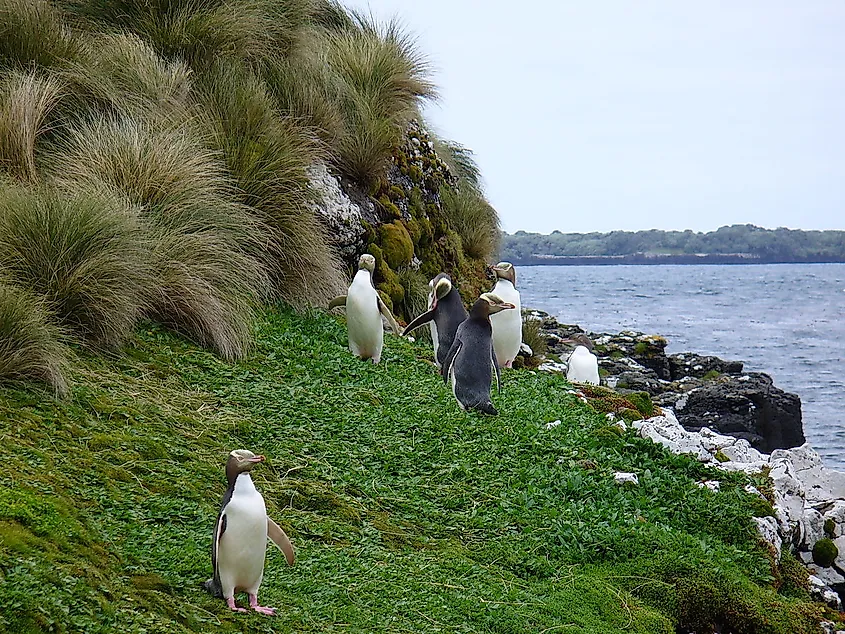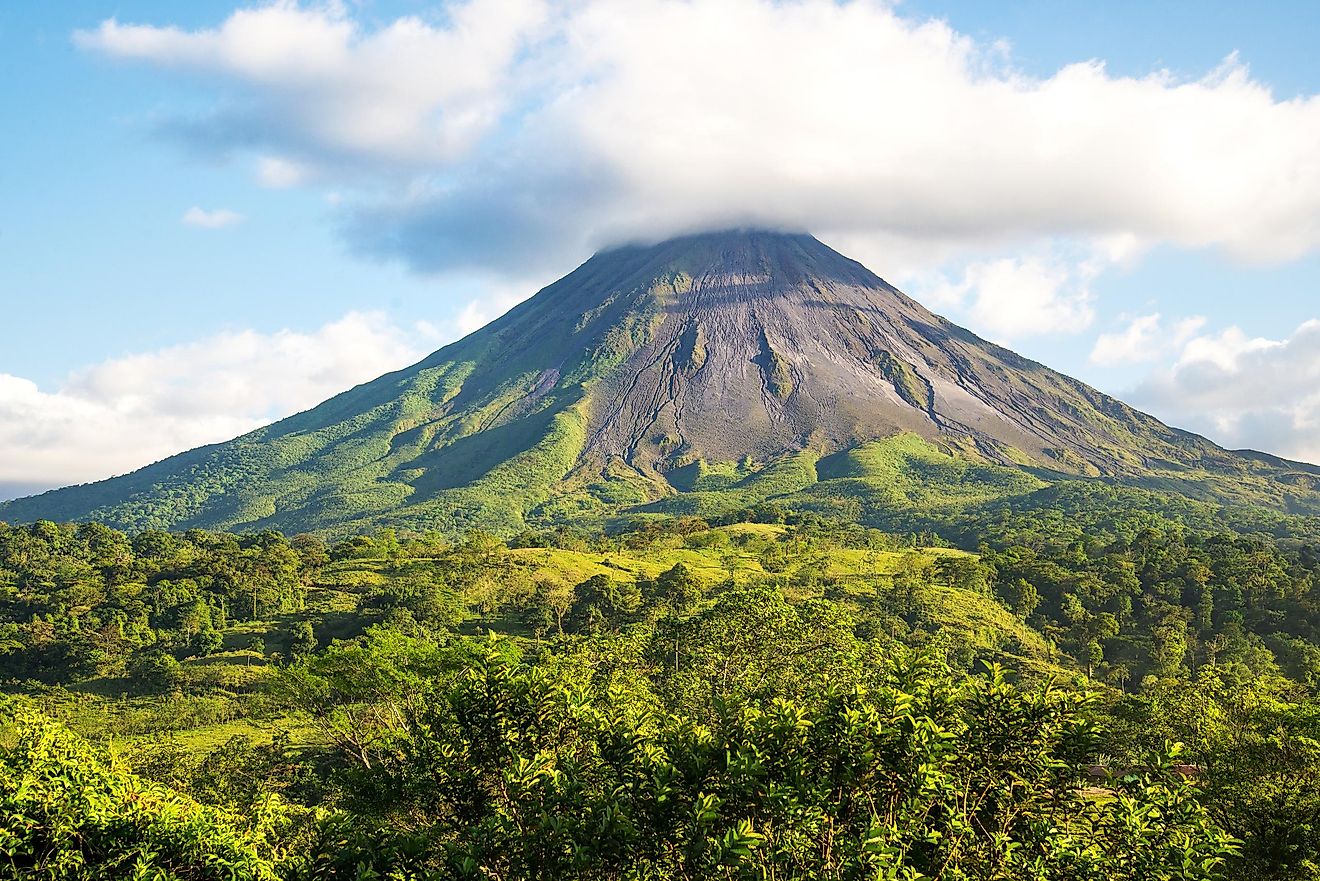
Auckland Islands
The Auckland Islands are an outlying group of islands in New Zealand that are located in the Southern Pacific Ocean. The Auckland Islands archipelago is situated about 465 km south of New Zealand’s South Island and 360 km south of Stewart Island.
Covering a combined area of 625.64 km2, the Auckland Islands are the largest of New Zealand’s subantarctic islands. The Auckland Islands archipelago includes the principal island of Auckland and smaller islands of Green Island, Rose Island, Ewing Island, Dundas Island, Disappointment Island, Adams Island, and Enderby Island.
Geography

The Auckland Islands are volcanic in origin and are composed of the remnants of two ancient Miocene volcanoes. The islands feature a rugged and mountainous terrain with deep valleys in between and several steep cliffs bordering the shoreline.
The principal island of Auckland covers a land area of about 450 km2 and has a length of 42 km and a maximum width of 12 km. The island is hilly and mountainous and features numerous peaks that rise over 600 m. Some of the significant peaks on the island include Mount Easton, Tower of Babel, Mount D’Urville, Mount Raynal, and Cavern Peak. Several deep inlets carve out the island on all sides with Port Ross being the most notable one, situated on the northern edge of the main island.
Located on the southern edge of the main island is the narrow Carnley Harbour, which separates the principal Auckland Island from the more mountainous and roughly triangular-shaped Adams Island. The Carnley Harbour is primarily the crater remains of an extinct volcano with Adams Island forming the rim of the crater. Situated on Adams Island is Mount Dick, which rises to an elevation of 705 m and serves as the highest point on the Auckland Islands.
The average temperatures of the Auckland Islands have very little daily or annual variation due to their geographic location between the Antarctic and subtropical oceanic convergence. On a typical day, the subantarctic Auckland Islands faces wet, cold, and windy weather. The islands also receive frequent rainfall all-round the year. According to the Köppen climate classification, the island’s Port Ross and Carnley Harbour experience a subpolar oceanic climate.
Wildlife

The vegetation of the Auckland Islands varies according to the different altitudes. The island’s inland areas are covered by southern rata forests with some species of subantarctic tree daisy in between. Above the inland areas, a subalpine shrub zone is found that is dominated by several flowering plant species of Coprosma, Dracophyllum, and Myrsine. In higher elevations, mega herbs and tussock grasses are found.
The Auckland Islands supports numerous species of subantarctic invertebrates such as 11 species of springtails, 24 species of arachnids, and more than 200 insect species including 39 species of moths, 57 species of beetle, and 110 species of flies. Dendroplectron aucklandensis is a species of cave weta that is endemic to the Auckland Islands.
About 17 species of endemic freshwater invertebrates have been recorded from the Auckland Islands. These include 12 species of flies, two species of caddisflies, one mayfly species, one crustacean species, and one mollusk species. Climbing galaxias fish have been recorded in the freshwaters of the Auckland Islands.
Two species of seals including the New Zealand fur seal and the New Zealand sea lion have been observed in the Auckland Islands. The Port Ross area serves as critical congregating grounds for Southern right whales.
The Auckland Islands support several significant avian species like the Auckland shag, white-chinned petrel, white-capped albatross, Auckland rail, yellow-eyed penguin, yellow-crowned parakeet, Auckland snipe, southern rockhopper, New Zealand falcon, pipit, and Auckland teal, among others. The entire Auckland Island archipelago has been designated as an Important Bird Area by BirdLife International.
Several species like pigs, cats, and mice have been introduced in the Auckland Islands and are currently only found on the main Auckland Island.
Brief History
Archaeological excavations have found several 13th-century Polynesian deposits on Enderby Island and it is therefore believed that the Auckland Islands served as the southernmost Polynesian settlement. In 1806, Captain Abraham Bristow discovered these islands and named them in the honor of William Eden, who was the first Baron Auckland. Several whaling stations were subsequently established on the islands. However, the islands lost their commercial importance by 1812 as the seal populations had been decimated, so the sealers shifted their bases to other island archipelagos. It has also been reported that about 11 sealing ships were destroyed due to shipwrecks offshore of these islands.
In 1842, Matiora chief led a settlement of Māori and Moriori slaves from the nearby islands to the Auckland Islands archipelago. However, all attempts to settle on the islands and cultivate its lands failed miserably, due to the harsh climatic conditions and the low-quality soil.
The Auckland Islands are presently uninhabited and are under the administration of the New Zealand Commissioner. In 1993, the Auckland Islands Marine Mammal Sanctuary was established. In 1998, all the islands that form a part of the New Zealand Sub-Antarctic Islands were designated as UNESCO World Heritage Site. In 2003, the Auckland Islands - Motu Maha Marine Reserve was established.











